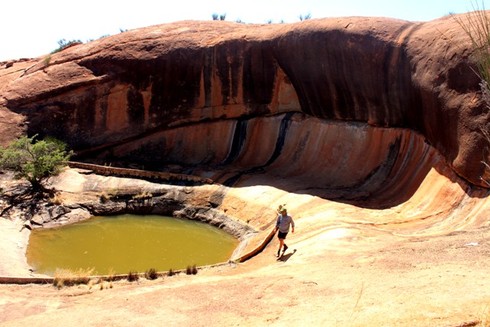
For two years from 1937, 100 men on sustenance labour were railed from Perth to the tiny town of Bonnie Rock. From there they went to build a 2.3km concrete wall around the rim of Beringbooding. to channel rainwater into a 2.2 million gallon water tank.
The struggling men building the tank and 40cm-to-50cm wall were teetering between the depression and the war. How many weeks work they had on the rock depended on how many children they had.
Beringbooding became the largest rock water catchment in Australia. Rainwater flowed into the tank but too late for 153 of 154 water clients the government had in 1935 in the Wialki and Bonnie Rock wheat farming districts.
All had depended to some extent (104 totally) on the government water supplies which failed in 1935, ’36 and finally in ’37, when the green light was given for the grey wall to curl around the top of the red rock. Rain fell and sloshed into the tank, war broke out and in 1941 Monty noted in lonely irony that he was the only settler left east of Yanoning Rock and the only one within 10 miles of Beringboodin’s grand catchment investment, worth about $12 million today.
Never mind. More farmers wandered back and the tank is still used for watering stock and spraying crops. From the top of the rock you have an excellent view of the way the tank roof is collapsing but the foundations are sturdy and as a tourist attraction it is without peer.
We strolled the wall, admired the emerald and suspiciously stagnant Kangaroo Pool (above), tried to tumble the Balancing Rock and wondered at the men who travelled 400km, slept in tent shanties and cooked on open fires, mixing concrete on site to survive.
A source of wonder too was the geographic fart that shot massive, rounded lumps of red rock out of the flat landscape on the Wheatfield Way.
We had gone past the Rabbit Proof Fence turnoff to Beringbooding after exploring Elachbutting Rock, using camp amenities provided and maintained by the 400 community-minded townsfolk of Mukinbudin who reckon Elachbutting was better than Wave Rock. Famous Wave we had inspected on a previous visit to WA; Elachbutting we thought was as good in the wave department if they chopped out some of the scrub so you could get a better photo.
Elachbutting is far more interesting all round, more than 6km around the circumference with heaps of nooks and crannies, a Rainbow Wall and the main wave-like wall leading into Monty’s Pass, a 40m tunnel. Isabel ploughed up the 4wd track to the top, where we wandered the smooth expanse of granite, admired the view of the wheatfields, took funny photos of our shadows in the setting sun, had a cold beer when the sun went down and sipped a wine as the moon emerged.
We didn’t get to Eagle Rock or Monty’s aforementioned Yanoning Rock but we had been looking forward to the little town with the lovely name of Bonnie Rock. A wheat siding is nearby but sadly, no town.
Bonnie Rock township was surveyed into 32 blocks in 1932, a year after the railway reached it. It served wheatstack and construction workers. A couple of stores were thrown up, the Misses McInerney ran a boarding house and by the time a hall was built in 1935 almost half of the blocks had been sold.
Then is all went to custard. By 1944 the books showed only one ratepayer, the hall. Sadly, Bonnie Rock today consists of the hall (still in use), the railway siding and lots of signs saying what used to be there.
Sandalwood cutters who were in the district before the first train stopped gave Bonnie Rock its sweet name because they were smitten with a particularly fine rock they found. They must have taken it with them because it too seems to have disappeared.
Maybe Bonnie was a pretty pet rock, not a grand granite edifce such as Elachbutting or Beringbooding.
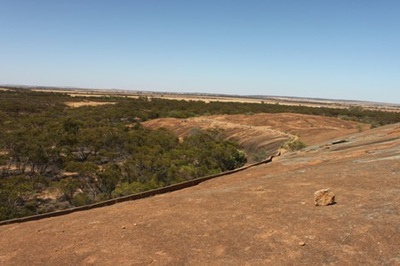
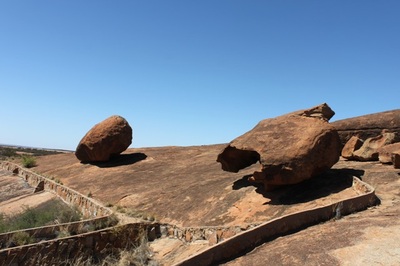
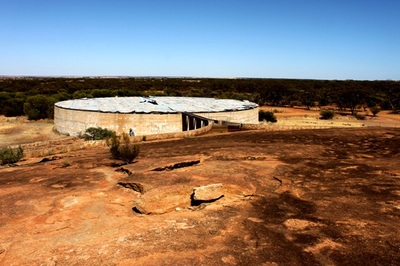
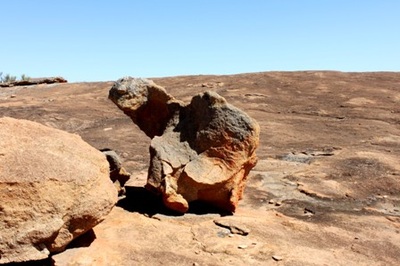
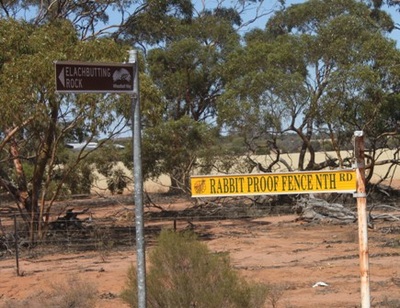
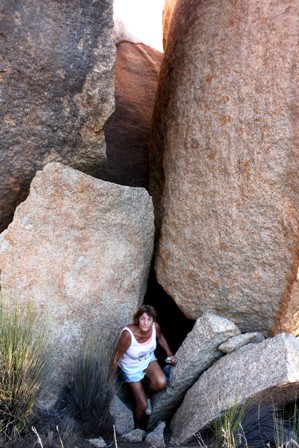
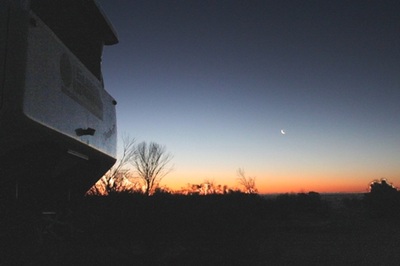
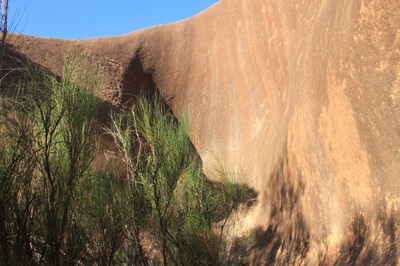

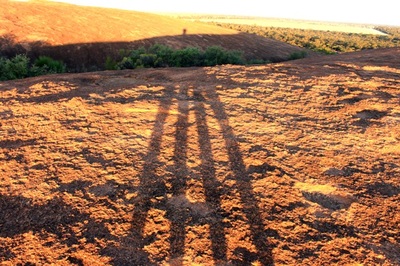
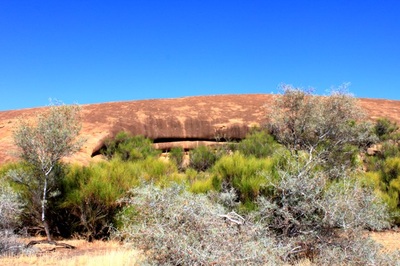
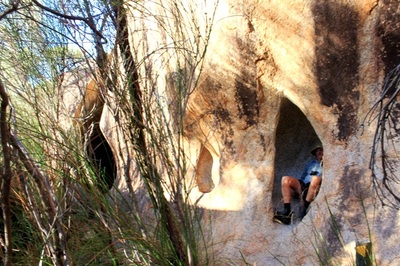
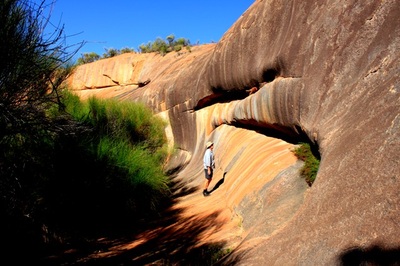
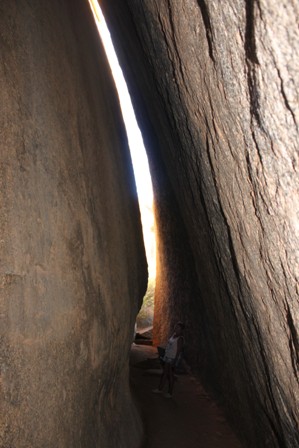
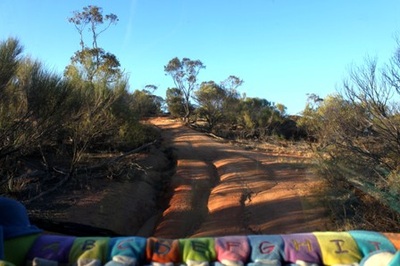
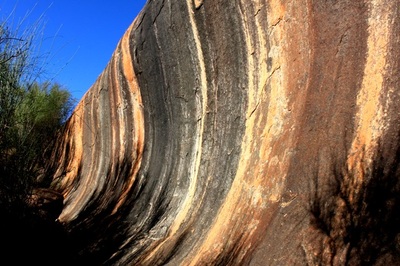
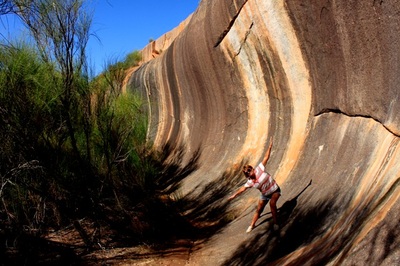
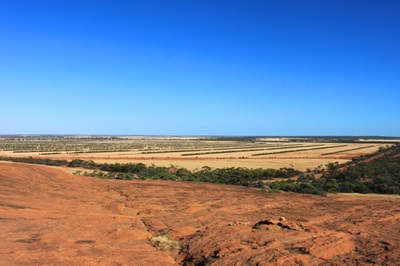
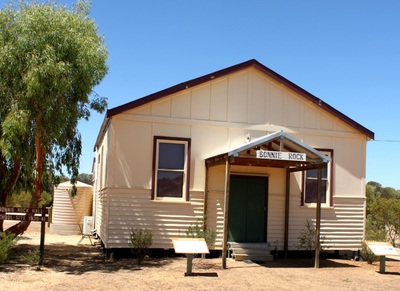
 RSS Feed
RSS Feed
